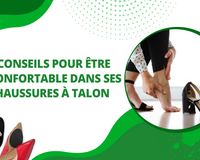Considered to be an immense pain affecting the sole of the foot, metatarsalgia manifests itself as tingling, burning sensations and pain that can worsen as you walk or perform movements such as running or jumping.
Although it can affect people of all ages, it is also very common in the elderly. Fortunately, there are a number of things you can do to help prevent it. relieve metatarsalgia and improve your quality of life.
About metatarsalgia

You may be suffering from metatarsalgia if you feel pain under the front of your foot. Although painful, this condition is also very common and can be linked to activities such as walking, running and the use of shoes. unsuitable footwear. In this article, we'll take a closer look at what metatarsalgia is, its symptoms, and the various treatments available to help prevent and relieve the pain.
What are the common causes of metatarsalgia?

When an individual suffers from plantar pain or metatarsalgia, it may mean that the metatarsals are swollen and painful. They may also be deformed. The causes of metatarsalgia pain can be numerous, and include the following:
- unsuitable, narrow shoes
- Overweight.
- Plantar morphology: flat feet, hollow feet, hallux valgus, etc.
- Excessive sports such as tennis or running.
- Carrying heavy loads at work.
- Known diseases such as Morton's syndrome, gout, osteoarthritis, etc.
- Etc
Metatarsalgia: Symptoms and consequences

It is important to note that apart from injury or illness, metatarsalgia can also be caused by ill-fitting footwear and excessive pressure on the foot.
However, symptoms of metatarsalgia can also include persistent pain under the arch of the foot, pain and a burning sensation when pressure is applied to the forefoot and toes. Calluses can also form on the front of the foot, causing difficulty in squatting and supporting oneself on the front of the foot.
Pain in the arch and also at the base of the toes during the onset of this pathology can of course extend to the phalanges, which the patient will feel as a real twinge.
Metatarsalgia also causes sensations of numbness in the foot, as well as swelling on the front and top of the foot.
How to choose the right shoe to relieve pain?
As a reminder, one of the first things you need to take seriously when choosing a shoe is the pain itself. to relieve metatarsalgia is the right choice of footwear for metatarsalgia. Shoes must offer good cushioning, fit well and provide good stability for your foot.
What's more, you also need to make sure that your shoes for metatarsalgia are not too tight, as this could put excessive pressure on your foot and aggravate your plantar pain. You should also choose suitable shoes with a low heel and a soft sole for better support.
Types of treatment for metatarsalgia

Treatment for metatarsalgia is not a trivial matter. Generally speaking, metatarsalgia treatments can include the use of orthopedic insertsIn these cases, medical treatments include physiotherapy and adapted footwear. In extreme cases, surgery may be required to relieve the pain associated with metatarsalgia.
Medical treatments for metatarsalgia
In addition to a good pair of comfortable orthopedic shoes, metatarsalgia sufferers can also turn to medical treatments for metatarsalgia, which can help relieve foot pain. However, in the case of metatarsalgia, the use of orthopedic insoles and physiotherapy become the two main recommended treatments.
Orthotics for metatarsalgia
Known as devices primarily designed to fit the feet and relieve metatarsalgia, orthotics are an effective way to combat plantar pain. At the very least, they can help distribute weight more evenly to relieve pressure and pain on the metatarsals. Insoles for metatarsalgia can also help to correct posture problems that can contribute to metatarsalgia.
Physiotherapy: a solution to the pain of metatarsalgia
Physiotherapy is one of the medical treatments that can help to relieve pain and symptoms associated with metatarsalgia. It includes muscle strengthening, stretching and stretching exercises to improve foot movement and mobility.
These exercises can help improve foot function and reduce inflammation. Physiotherapy can also help relieve pain and prevent its recurrence.
Surgical treatment of metatarsalgia
If medical treatment fails, surgery may be considered. However, it should be noted that this type of treatment aims to re-establish a natural distribution of body weight on the ground. To this end, there are two main types of surgical intervention available to relieve the pain of metatarsalgia.
- Weil osteotomy: to implant a screw in the metatarsal, this surgical operation raises or shortens the metatarsal heads.
- Minimally invasive osteotomy: this type of surgery does not involve implanting a screw in the foot, but several metatarsal bones are broken. Subsequently, the metatarsal bones consolidate in a more natural distribution of body weight. However, it is advisable to resume walking immediately after the operation.
Metatarsalgia: exercises to combat metatarsalgia

Stretching and exercise are another possible way of dealing with the pain caused by metatarsalgia. Stretching can help reduce pressure on the metatarsals and improve muscle balance. It's also important to remember that you should always stretch the foot muscles gently and gradually, as too much pressure can aggravate the pain.
Conclusion
Metatarsalgia is a fairly painful condition that can affect anyone, regardless of age. It's important to consult a doctor or podiatrist for a diagnosis and advice on the best treatments.
In most cases, the pain associated with metatarsalgia can be relieved by simple measures such as wearing orthopedic shoesphysiotherapy and the use of orthopedic insoles for metatarsalgia.









